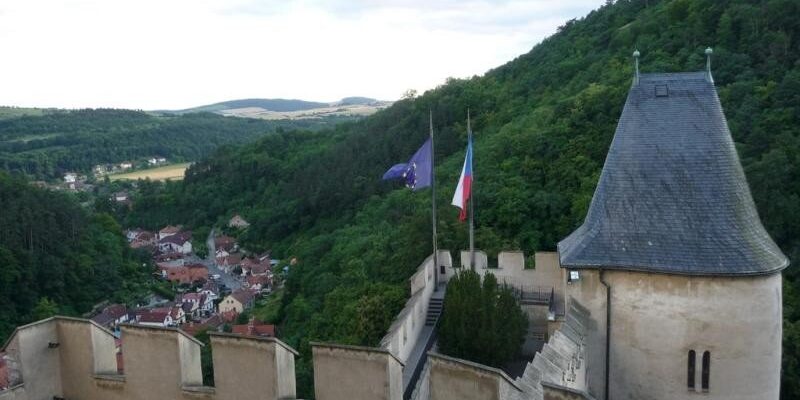Karlštejn Castle
Karlštejn Castle is the most famous Czech castle, one of the symbols of the Czech kingdom of the Gothic heyday. The castle was conceived as a symbol of imperial power and the Holy Roman Empire and, at the same time, it became an impregnable fortress for storing the most important state documents, Czech and imperial symbols of state power, jewels and holy relics.
>
Over the years, the castle has become a magical cultural monument that welcomes hundreds of thousands of visitors every year. Its rich history is associated with many names, titles, things and events.
Karlstejn Castle is located on a cliff top on the banks of the Berounka River and consists of several floors. At the highest point, namely in the Great Tower in the Chapel of St. Cross, the royal regalia and jewels were located.
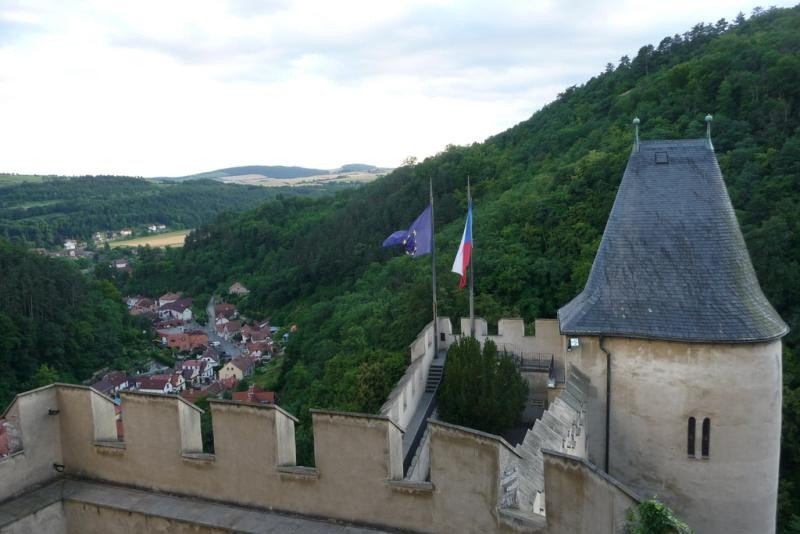
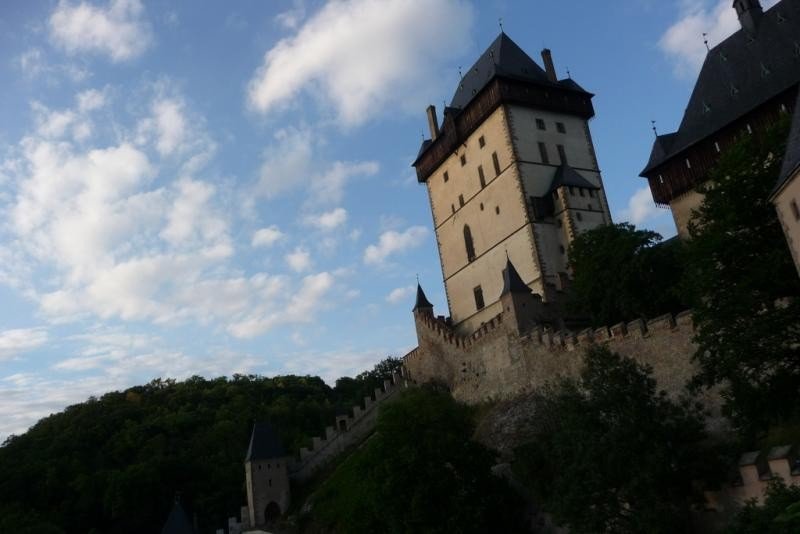
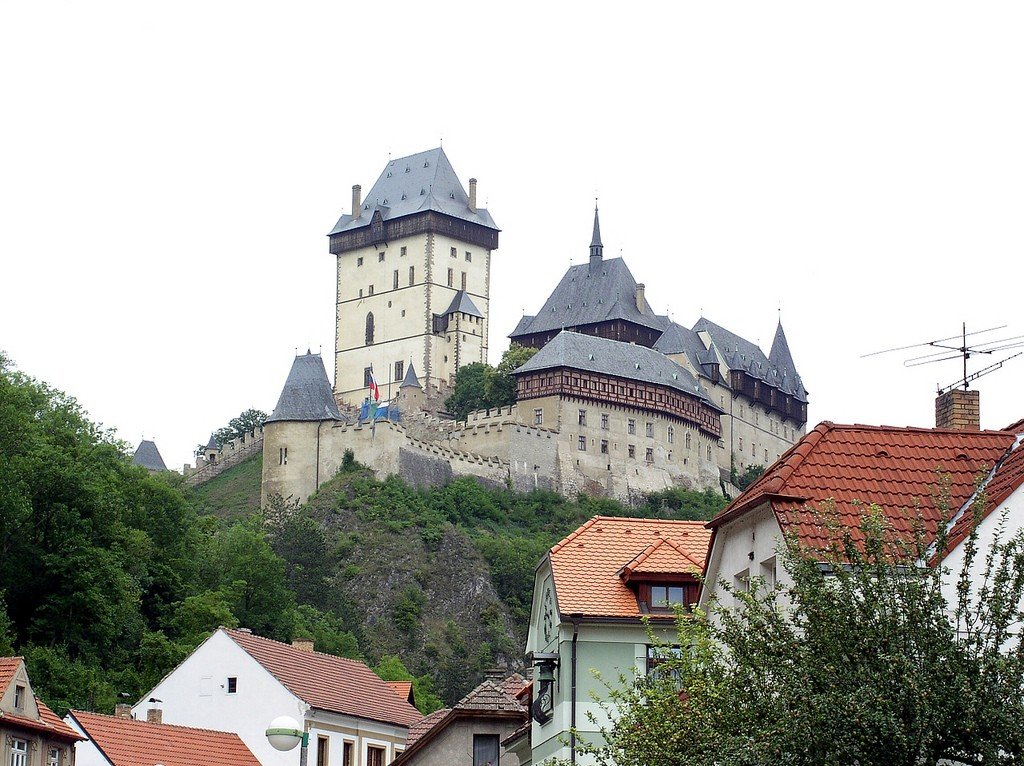
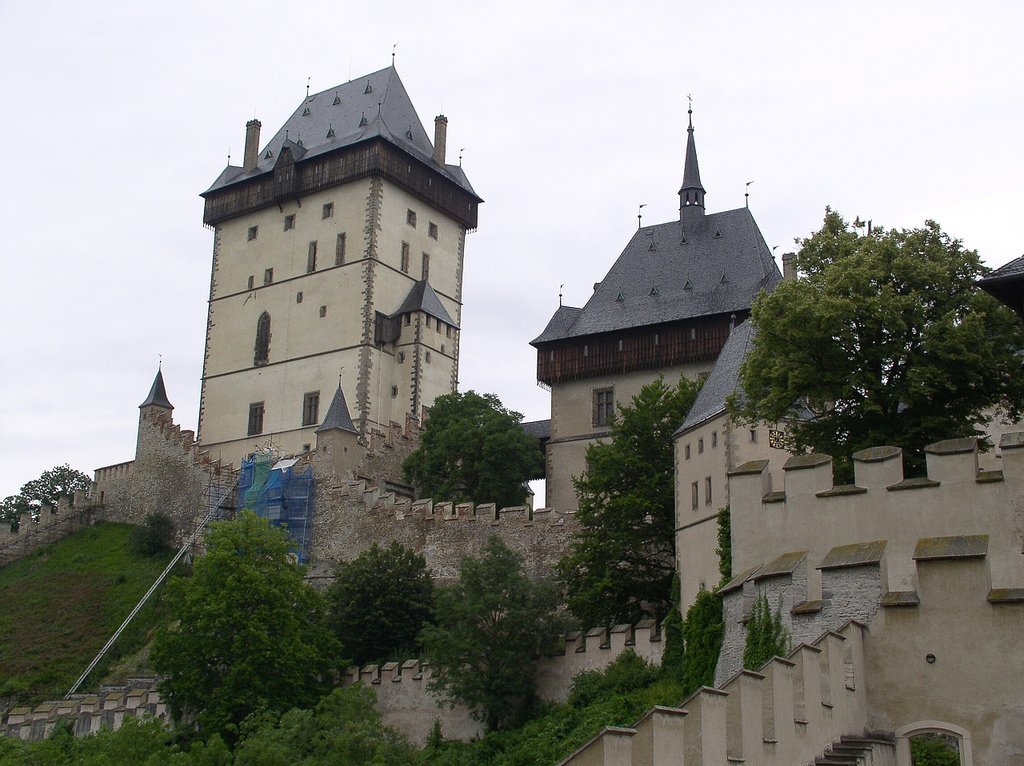
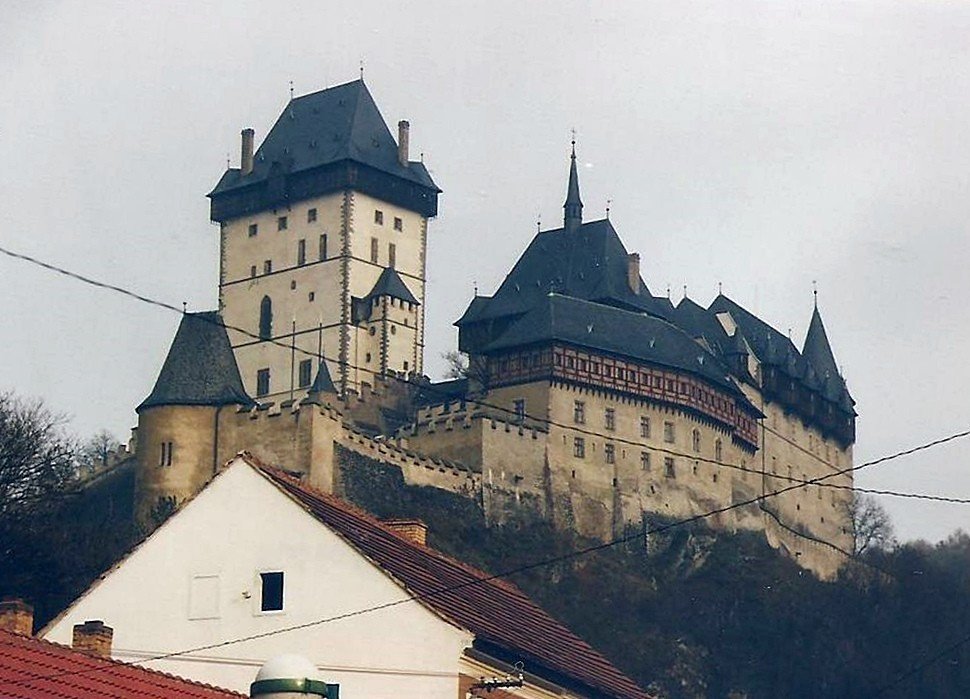
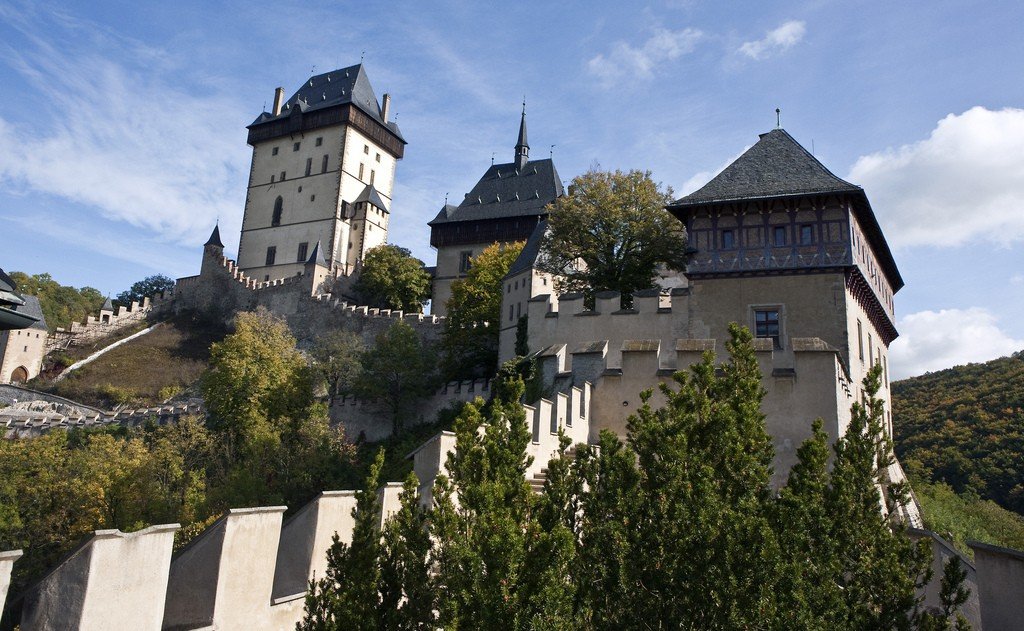
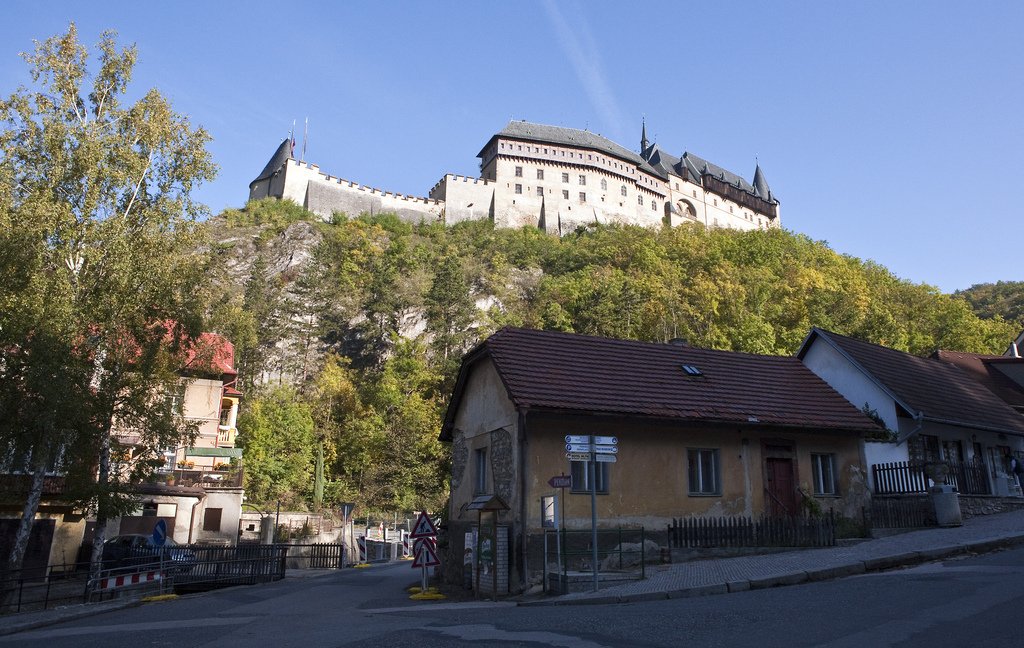
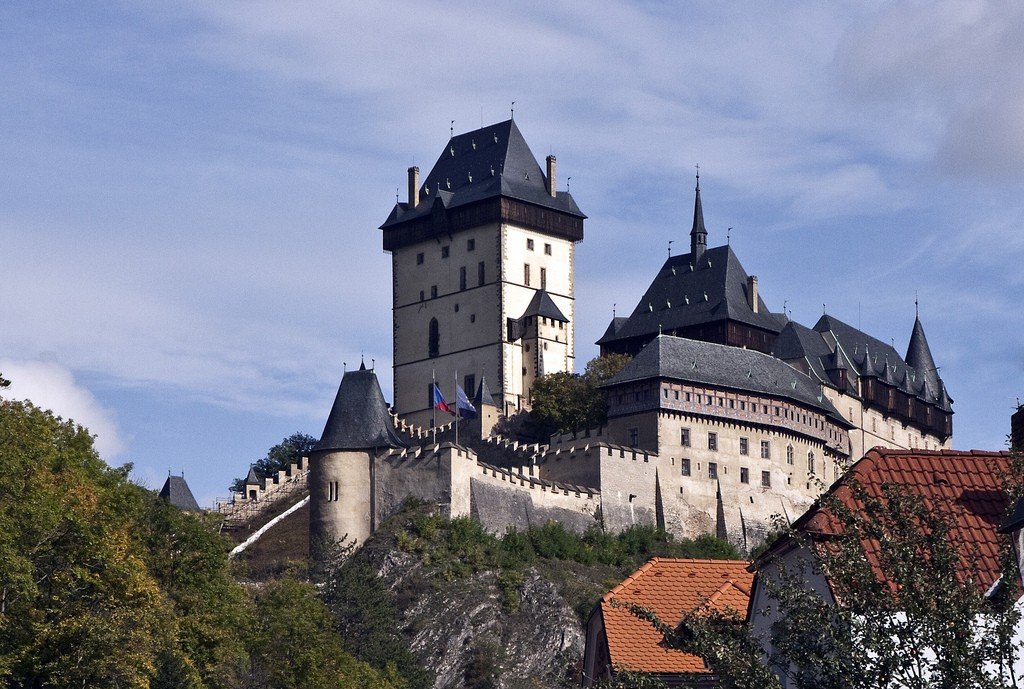
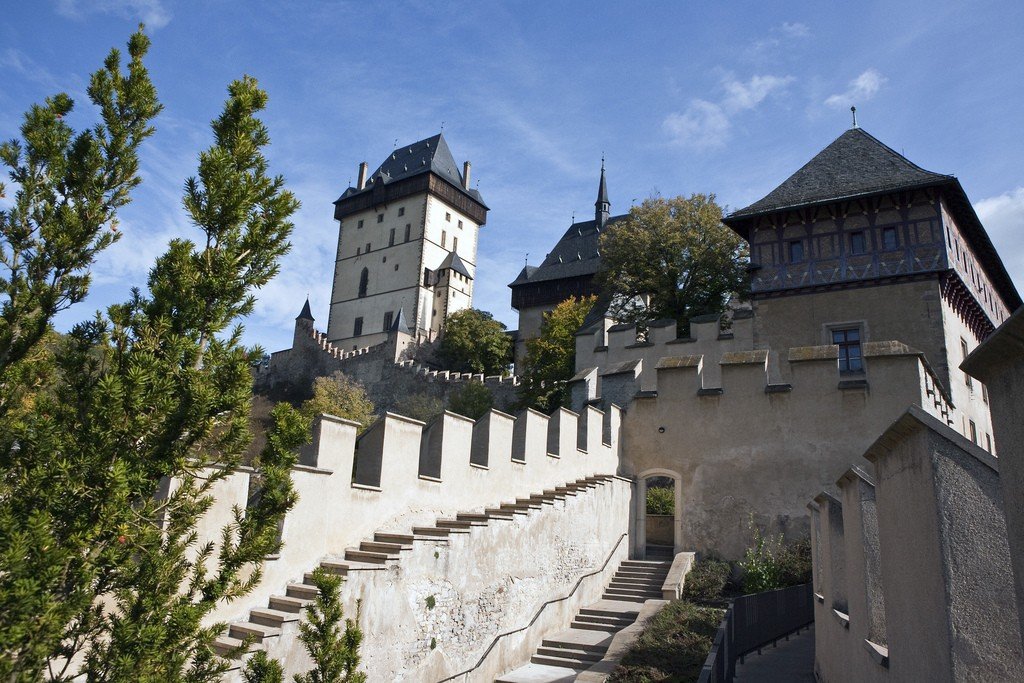
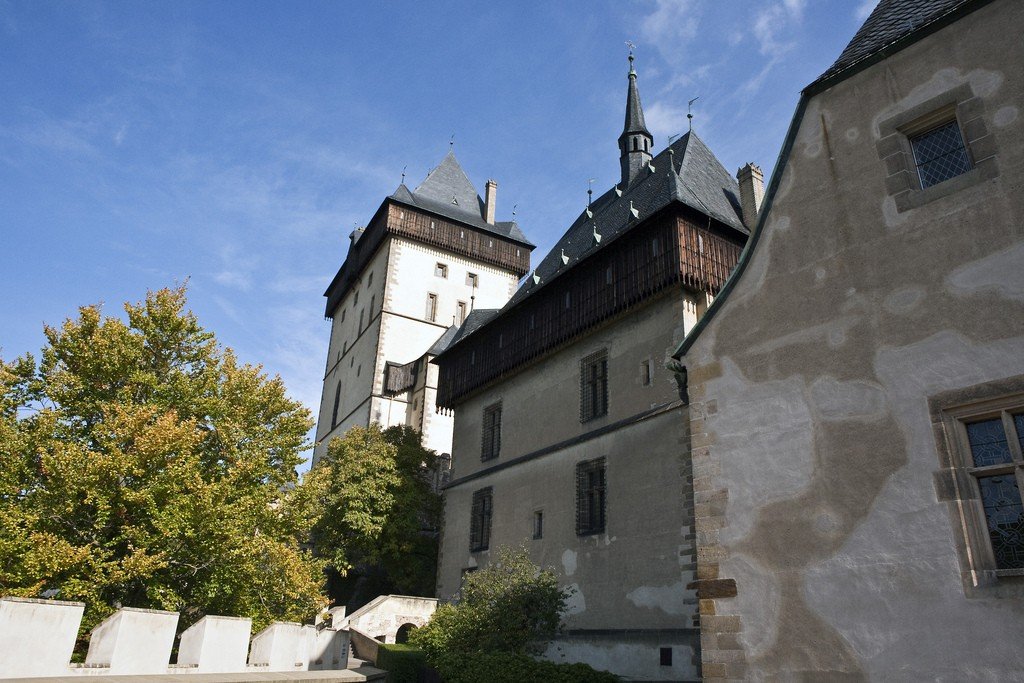
Video: Karlstein Castle
ContentsArchitecture
Karlstein Castle consists of three main buildings, defended as a unit and as independent fortifications. Emperor Charles set the task for this fortress to be not only an impregnable stronghold, a “stone nut”, but also to become the center of religious and political life in Europe, like the holy mountain in Jerusalem.”
The large tower is rectangular in plan – 25 by 17 meters. The average thickness of the castle walls is about 4 meters, on the north side the thickness reaches up to 6 meters.
.
The castle is tiered, depending on the degree of religious significance of each building. The lower level, the burgrave, then the palace of the emperor, his secular dwelling. And finally, the Great Tower, which contains the “holy of holies” – the Chapel of the Holy Cross. The complex was designed as a way for pilgrim pilgrims to the “holy spring.”
On the lowest and least significant level, the outer court was built, where the burgrave is located and servants are engaged in household chores: washing linen, baking bread, forging weapons and storing supplies.
The Chapel of the Holy Cross is decorated in the likeness of Sainte Chapelle, the chapel of the royal palace on the Isle of Cité in Paris, where Charles IV went to pray as a child. The ceiling and walls are decorated with four thousand plates of jasper, agate, onyx and amethyst, framed by gold plates with Charles’s personal coat of arms and the Bohemian lion. A sunbeam, once penetrated, does not disappear, wandering and reflecting in the thousands of polished surfaces of the stone shards. Venetian glass with the sun, moon and stars overhangs overhead. The most valuable thing in the chapel is the altar with 130 images of saints and popes. Among the portraits is an image of Emperor Charlemagne, a distant ancestor of the Bohemian king.
The first room one enters in the castle turns out to be the Hall of Man. An imposing room decorated with a wooden ceiling and an original fourteenth-century fireplace. In this room the manes, or vassals, who were charged with guarding the castle, would gather.
The Luxembourg Hall houses the portrait gallery of the family, the largest gallery of portraits of Czech rulers in the country. Several portraits were executed for the gallery by the great master Theodoric (author of the marvelous decoration of the Chapel of the Holy Cross).
.
History
In 1347, Charles IV, King of Bohemia, enters Rome and acquires the crown of the Holy Roman Empire.
.In 1348, Charles undertakes significant building work in his new Empire: he lays the New City in Prague, the University of Prague, and the Karlstein Castle.
.The first stone of Karlstejn (Karlstejn – “Karl’s Stone” was the name of the castle) was laid by Arnost of Pardubice, the first Archbishop of Prague and the king’s closest advisor.
.In 1365, the “heart of the castle” – the Chapel of St. Cross – was consecrated. The construction was completed only 20 years later.
At the same time as the construction was being completed, expensive work was going on to finish and decorate the interiors of the castle.
.
In Karlstein, the emperor collected the most valuable things for the whole of Christianity: the spear of St. Longinus, a large piece of wood of the cross of Christ on which the nail holes were still visible, a sponge purchased in Mantua from the Benedictine monastery of St. Andrew, and two thorns from the crown of Christ, which were kept in the church of Sainte Chapelle in Paris and given by John the Good, the French king. To store his relics, Charles builds the Great Tower, in which he constructs 4 powerful iron doors with cunning locks.
.
The management and defense of the castle at this time was entrusted to the Burggrave, who was subject to a garrison of vassals, which consisted of knights living on estates around the castle.
.In case of danger, they were obliged to report to the castle and ensure its defense. The second type of vassals, the so-called “castle vassals,” were required to stand guard at the gates, ring the bells, and maintain order throughout the castle.
M. Wurmser, T. da Modena, and the most famous of the Czech Gothic artists, Master Theodoric, took part in the work of decorating the castle. For his unique artistic works on interior decoration, he was granted an estate on Možina and other privileges.
.At the time, Charles personally oversaw the completion of these works, often staying at the castle. The last time the king was at the castle was two years before his death in 1376, together with his son (from his second marriage) and heir Vaclav IV (Vaclav, Wenceslaus IV), who liked to visit the castle with his first wife. .At the beginning of the Hussite riots, in fear of impending wars, Czech coronation regalia and a number of treasures from many monasteries, especially the Zbraslav monastery, were transported to Karlštejn. Thus in the Chapel of St. Cross, Czech and imperial regalia from Prague Castle were kept together for some time.
.
The precautions were not in vain – the rebels managed to hold Prague and Prague Castle until 1434.
.The Hussites tried to take Karlštejn as well, but after occupying all the surrounding hills and bombarding the castle walls with stones and lighted soot, they stood for 7 months under the castle walls in 1427, but did not make it even to the inner courtyard.
The Hussites tried to take Karlštejn as well.
Emperor Sigismund (Latin: Sigismundus, Czech: Zikmund; 1368-1437), the second son of Charles IV, infamous for his death sentence against Jan Hus, ordered all treasures to be removed from Karlstein, but by the time Bohemia recognized Sigismund as its king, the Bohemian regalia had already been returned to Karlstein in 1436.
.Despite this, the imperial treasures remained forever outside Bohemia and until today form part of the treasury in Vienna.
.Under the reign of King Wladyslaw II Jagiello, a new surge of grandeur takes place in Karlstein. At this time, the palace and other buildings, especially the Burggrave complex of the castle in the Gothic style, were extensively reconstructed.
>After the great fire in Prague in 1541, when a large number of court books were burned, it was decided to move copies of the burned originals to Karlštejn, where there was already a large archive of literatures and chronicles.In 1609, the famous decree of Emperor Rudolf II declaring freedom of religion in the state was deposited in the castle with great honors. Under Rudolf’s renaissance style repairs and reconstruction of the castle are carried out.
At the outbreak of the Thirty Years’ War, the treasures of the Bohemian crown were moved to Prague Castle out of precaution.
.In 1620. Karlštejn was besieged by the Swedes, they even managed to break beyond the first line of fortifications, but they did not go any further.
.
In general, Karlstein suffered more from the defenders than from the besiegers during its history. Almost every soldier of the garrison considered it his duty to take something “as a souvenir.”
In 1625, after the suppression of the Czech class revolt, Emperor Ferdinand II liquidated the Karlstein burgrave, reducing the status of the castle to a village manor, and gave the castle itself with the surrounding land, which had become the dowry of Czech queens, to his wife Eleonora. The latter mortgaged it to Jan Kavka from Rýčany, which aggravated its decline. The castle belonged to this family until the beginning of the 18th century. That is when all the treasures of Charles IV were finally transferred to Prague Castle. There were a huge number of relics stored in 22 huge cabinets. They formed the main part of the famous treasury in St. Vitus Cathedral.
The widow of Emperor Leopold (German: Leopold I., 1640-1705) managed to recover Karlstein by paying a deposit.
.Maria Theresia (German: Maria Theresia, 1717-1780), who owned the castle after Elizabeth (wife of Charles of Habsburg), gives it to the Hradcany Pension for Noble Maidens. The new owners used the castle mainly for household purposes, occasionally serving masses in some of the chapels. The boarding house is considered to be the last owner of the property before it passes into state ownership.
.
When Emperor Franz I. Stephan (Franz I. Stephan, 1708- 1765) visited Karlstejn in 1812 with his daughter Louise, the sovereign decided to urgently start restoration work to save the deteriorating castle and even allocated funds.
.However, in the general turmoil, Franz ordered some of the original furnishings, including even some of the wooden wall upholstery, to be removed from Karlstein to Vienna.
Emperor Franz Josef I (Franz Josef I) was more humane, entrusting the restoration work to the Central Commission for the Protection of Monuments under the leadership of F. Schmidt (a professor at the Vienna Academy of Fine Arts, who later passed the leadership to his student Josef Mocker). The latter became famous for restoring many castles in Bohemia and in particular managed to complete the construction of St. Vitus Cathedral in Prague Castle.
.
The architect Mokker devoted the last years of his life to Karlstejn. His merit (as well as a great cause for attack) is that the reconstruction was carried out (chosen by Mokker once and for all) by the method of purism, the aim of which is to achieve purity of the architectural style of the monument, typical of the Middle Ages, removing other styles (e.g. all Renaissance burgrave additions were demolished), which is of exceptional artistic and historical value. Thanks to Mokker’s reconstruction, we can see the castle through the eyes of a contemporary of the Czech “Charlemagne.”
However, some experts argue that Charles IV would not have recognized his castle after the “reconstruction work” using Portland cement. They believe that for this reason UNESCO is in no hurry to recognize the castle as a World Heritage Site. However, such subtleties apparently care little for tourists, of which Karlštejn is the second largest in the Czech Republic after Prague..Practical information
How to get there
The castle is located 35 kilometers from Prague, in the southeast. The train from Prague Main Station takes 35 minutes, trains run every hour.
Karlštejn Castle website: www.hradkarlstejn.cz
.Opening hours of the castle
in March 09.00-15.00, daily except Mondays;in April, October 09.00-16.00, daily except Monday;in May, June, September 09.00-17.00, daily except Monday;in July-August 09.00-18.00, daily except Monday;in November: 01.11-26.11, 09.00-15.00, daily except Monday;in December 09.00-15.00, daily except Mondays in the period 26.12-31.12;in January 09.00-15.00, daily except Mondays between 01.01-08.01;in February the castle is unfortunately closed to the public.
Cost
for adults – 220 Kc;for children, students and pensioners – 120 Kc.
.